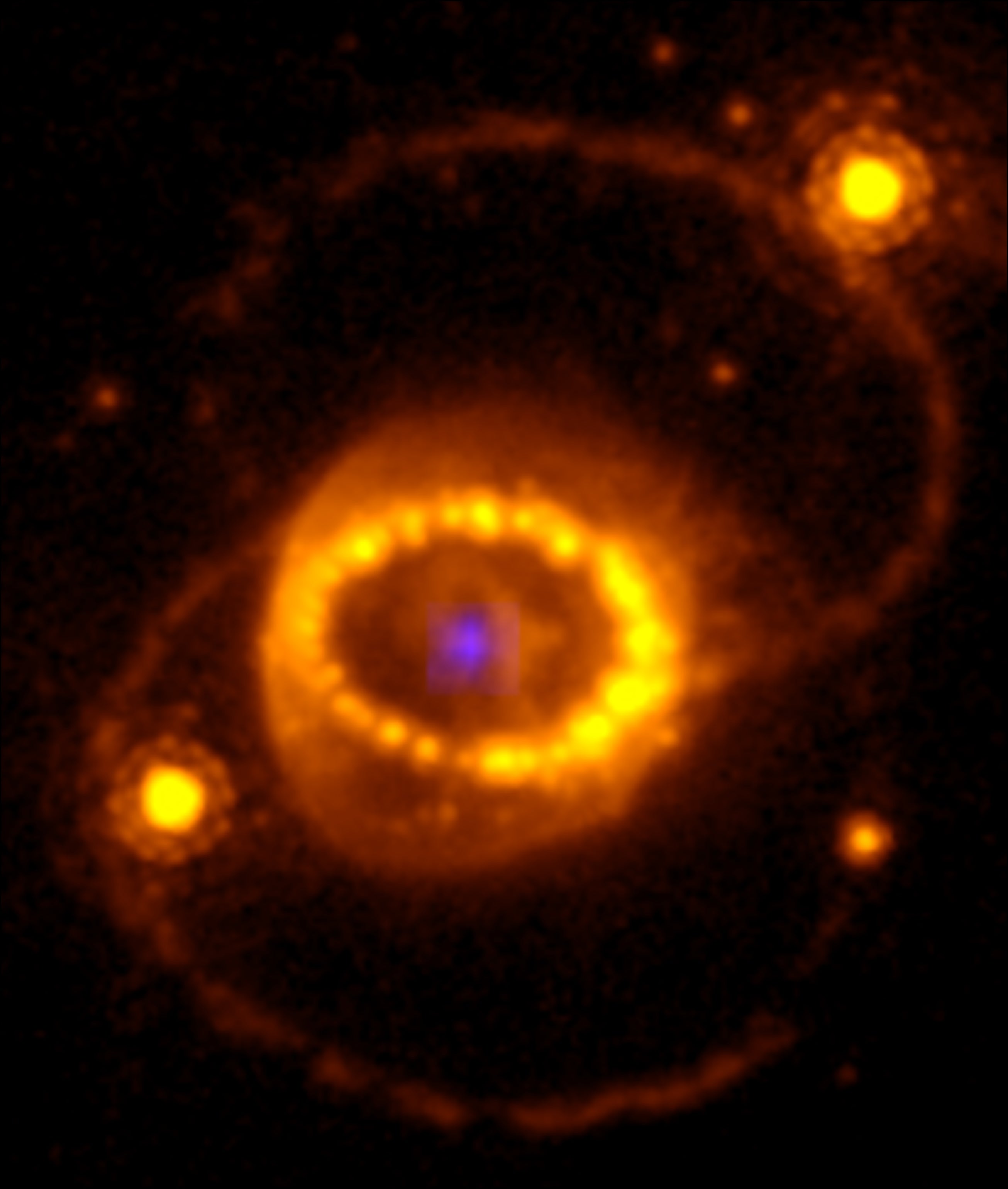
Nearly forty years ago residents of Earth were treated to a rare cosmic sight: an exploding star in our sky that was visible to the naked eye. Called Supernova 1987A (SN 1987A), it was the closest such event of the past four centuries. Ever since astronomers have sought to observe the stellar remnant that they have known must lurk near the supernova’s center, shrouded within an expanding nebula of radioactive ash and incandescent gas. Now, thanks to the power of the James Webb Space Telescope (JWST), a team of scientists has finally found that elusive quarry, confirming suspicions that the explosion created an extremely dense neutron star rather than a starlight-swallowing black hole.
The discovery, published on Thursday in Science, used JWST’s unprecedented infrared capabilities to pierce the veil surrounding SN 1987A, allowing it to be seen in a literal new light. Peering into the heart of the debris left behind by the star’s demise, astronomers led by Claes Fransson of Stockholm University in Sweden spied hints of ionized argon and sulfur—that is, evidence of elements that were so shocked by some external force that their electrons had been stripped away. These energized elements would not be expected to exist so close to SN 1987A’s “ground zero”—unless they formed from intense ultraviolet and x-ray bombardment from a nearby neutron star. A feeding black hole burping out blasts of radiation could also explain the result, but more than three decades of observations have failed to reveal any other signs of such a thing within SN 1987A, making JWST’s result almost airtight proof of the neutron star’s existence.
“It’s very exciting,” says astrophysicist Mikako Matsuura of Cardiff University in Wales, who was not involved with the study and previously suggested in 2019 that a neutron star would be found in this supernova. “It’s probably the strongest evidence of the presence of a neutron star in Supernova 1987A.”
On supporting science…
Read the full article here






